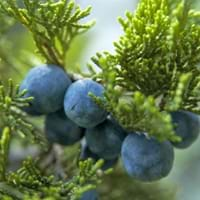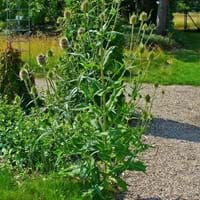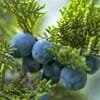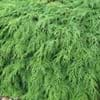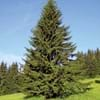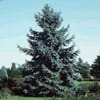Life Span
Perennial
Biennial
Type
Needled or Scaled Evergreen
Flowering Plants, Herbs
Origin
Hybrid origin, North America
Europe, Asia
Types
Not Available
Not Available
Habitat
Deciduous forests, Rocky areas, rocky outcrops
Rocky areas, Semi desert, Subtropical climates
USDA Hardiness Zone
3-7
5-8
Sunset Zone
A2, A3, 1a, 1b, 2a, 2b, 3a, 3b, 4, 5, 6, 7, 8, 9, 10, 11, 12, 13, 14, 15, 16, 17, 18, 19, 20, 21, 22, 23, 24
21,22
Habit
Pyramidal
Upright/Erect
Flower Color
Brown, orange brown, Purple
Purple
Flower Color Modifier
Bicolor
Bicolor
Fruit Color
Voilet
Non Fruiting Plant
Leaf Color in Spring
Blue
Green
Leaf Color in Summer
Blue Green
Green
Leaf Color in Fall
Blue Green
Green
Leaf Color in Winter
Blue Green
Light Green
Leaf Shape
Scale-like imbricate
Ovate
Plant Season
Spring, Summer, Fall, Winter
Summer, Fall, Winter
Sunlight
Full Sun, Partial Sun
Full Sun
Growth Rate
Medium
Very Fast
Type of Soil
Loam, Sand
Clay, Loam
The pH of Soil
Neutral, Alkaline
Acidic, Neutral, Alkaline
Soil Drainage
Well drained
Average
Bloom Time
Early Spring, Mid Spring, Spring
Summer, Late Summer
Tolerances
Drought
Not Available
Where to Plant?
Container, Ground, Pot
Ground, Pot
How to Plant?
Cuttings, Seedlings
Seedlings, Stem Planting
Plant Maintenance
Medium
Medium
Watering Requirements
Does not require water in summer, Keep the Soil well drained, Medium
Average Water Needs
In Summer
Lots of watering
Lots of watering
In Spring
Moderate
Moderate
In Winter
Average Water
Average Water
Soil pH
Neutral, Alkaline
Acidic, Neutral, Alkaline
Soil Type
Loam, Sand
Clay, Loam
Soil Drainage Capacity
Well drained
Average
Sun Exposure
Full Sun, Partial Sun
Full Sun
Pruning
Remove damaged leaves, Remove dead branches, Remove dead leaves
Remove damaged leaves, Remove dead branches, Remove dead leaves, Requires very little pruning
Fertilizers
All-Purpose Liquid Fertilizer
All-Purpose Liquid Fertilizer
Pests and Diseases
Red blotch
Pests and diseases free
Plant Tolerance
Drought
Drought
Flower Petal Number
Single
Single
Foliage Texture
Medium
Coarse
Foliage Sheen
Matte
Glossy
Attracts
Not Applicable
Birds
Allergy
Not Available
Skin irritation
Aesthetic Uses
Bonsai, Hanging Basket, Showy Purposes, Used for decorating walls, fences, gates, hedges, etc.
Showy Purposes
Beauty Benefits
Not Available
Not Available
Environmental Uses
Air purification
Air purification
Medicinal Uses
Antirheumatic, Hemostatic, Hepatic, Skin Diseases, Skin wounds, treating tumours
No Medicinal Use
Part of Plant Used
Flowers, Leaves, Root, Stem
Flowers
Other Uses
Decoration Purposes, Pesticide, Used as Ornamental plant
Dried heads are used in floristry, Used as Ornamental plant
Used As Indoor Plant
No
No
Used As Outdoor Plant
Yes
Yes
Garden Design
Feature Plant, Foundation, Hedges, Mixed Border, Rock Garden, Wall, Screening, Wind Break
Wildflower
Botanical Name
Juniperus Scopulorum
DIPSACUS fullonum
Common Name
Rocky Mountain Juniper, Wichita Blue Juniper
Fuller's Teasel
In Hindi
Wichita Blue Juniper
Fuller's Teasel
In German
Wichita Blue Juniper
Fullers Karde
In French
Wichita Blue Juniper
Cardère à foulon
In Spanish
Wichita Blue Juniper
Cardo de Fuller
In Greek
Wichita Blue Juniper
Νεράγκαθο του Fuller
In Portuguese
Wichita Blue Juniper
Carda de Fuller
In Polish
Wichita Blue Juniper
Fullera Oset
In Latin
Wichita Blue Juniper
Teasel Fullonis
Phylum
Pinophyta
Anthophyta
Class
Pinopsida
Magnoliopsida
Family
Cupressaceae
Dipsacaceae
Clade
Not Available
Angiosperms, Asterids, Eudicots
Tribe
Not Available
Not Available
Subfamily
Cupressoideae
Dipsacoideae
Importance of Wichita Blue Juniper and Fuller's Teasel
Want to have the most appropriate plant for your garden? You might want to know the importance of Wichita Blue Juniper and Fuller's Teasel. Basically, these two plants vary in many aspects. Compare Wichita Blue Juniper and Fuller's Teasel as they differ in many characteristics such as their life, care, benefits, facts, etc. Every gardener must at least have the slightest clue about the plants he wants to plant in his garden. Compare their benefits, which differ in many ways like facts and uses. The medicinal use of Wichita Blue Juniper is Antirheumatic, Hemostatic, Hepatic, Skin Diseases, Skin wounds and treating tumours whereas of Fuller's Teasel is No Medicinal Use. Wichita Blue Juniper has beauty benefits as follows: Not Available while Fuller's Teasel has beauty benefits as follows: Not Available.
Compare Facts of Wichita Blue Juniper vs Fuller's Teasel
How to choose the best garden plant for your garden depending upon its facts? Here garden plant comparison will help you to solve this query. Compare the facts of Wichita Blue Juniper vs Fuller's Teasel and know which one to choose. As garden plants have benefits and other uses, allergy is also a major drawback of plants for some people. Allergic reactions of Wichita Blue Juniper are Not Available whereas of Fuller's Teasel have Skin irritation respectively. Having a fruit bearing plant in your garden can be a plus point of your garden. Wichita Blue Juniper has no showy fruits and Fuller's Teasel has showy fruits. Also Wichita Blue Juniper is not flowering and Fuller's Teasel is not flowering . You can compare Wichita Blue Juniper and Fuller's Teasel facts and facts of other plants too.
